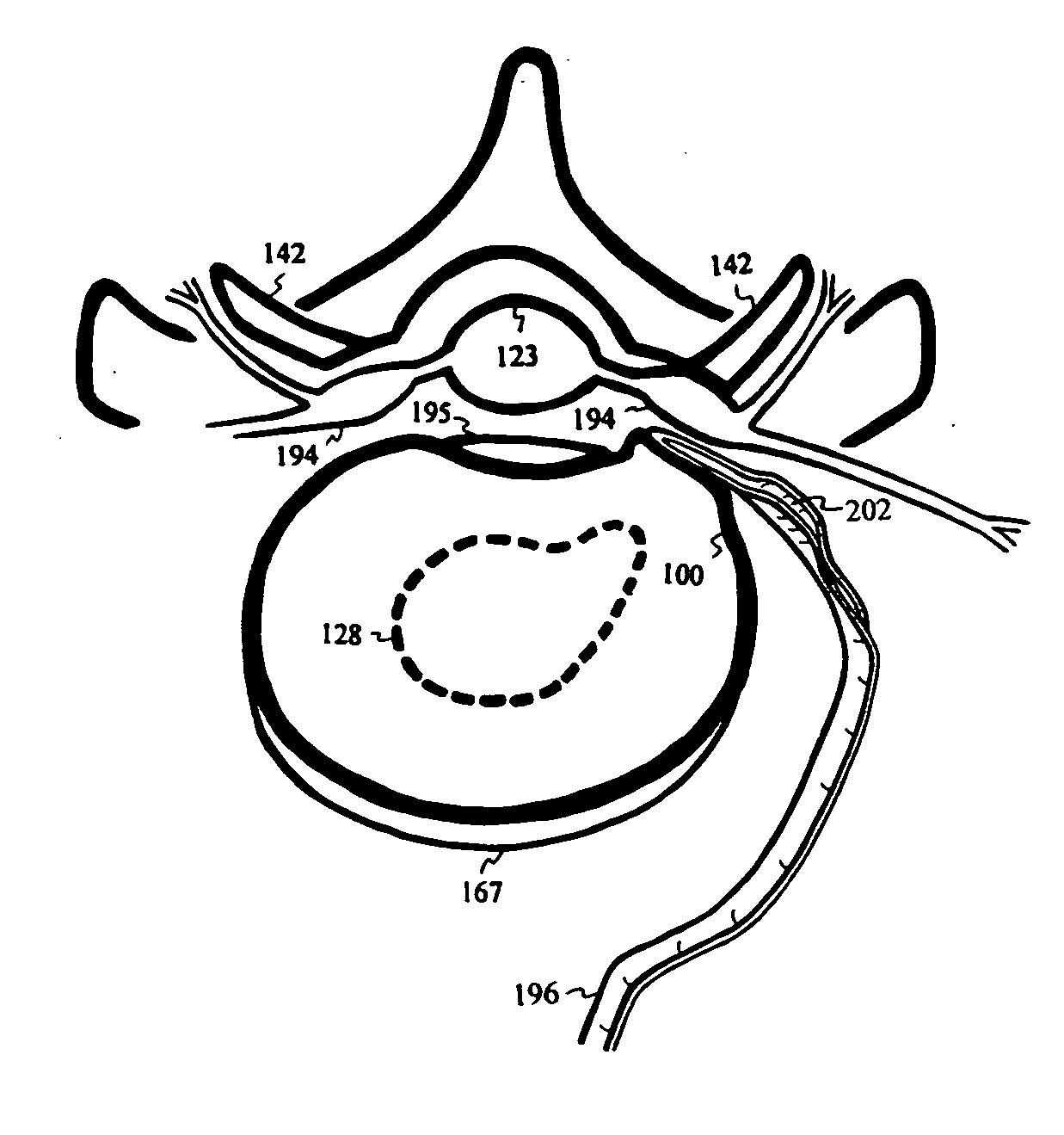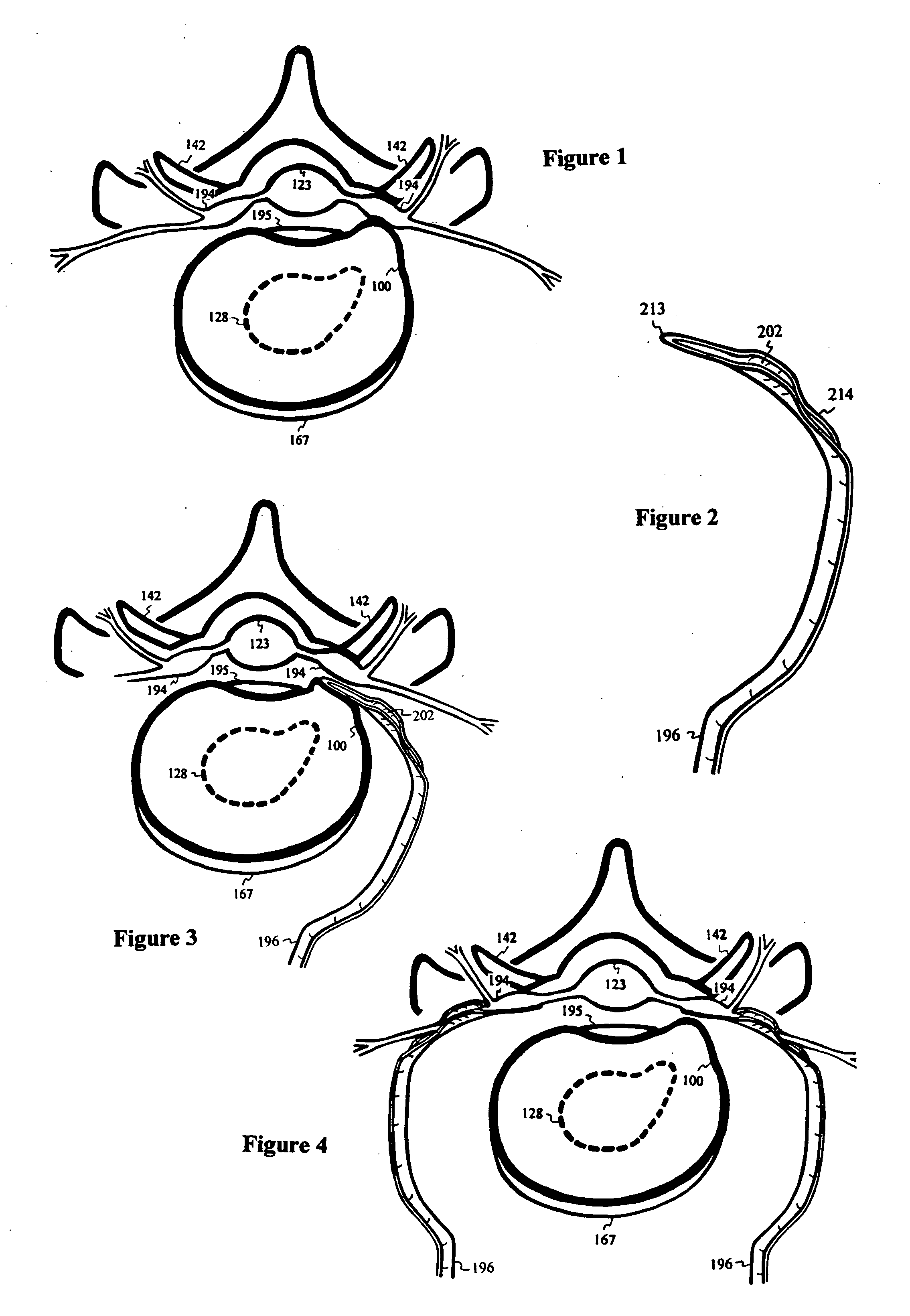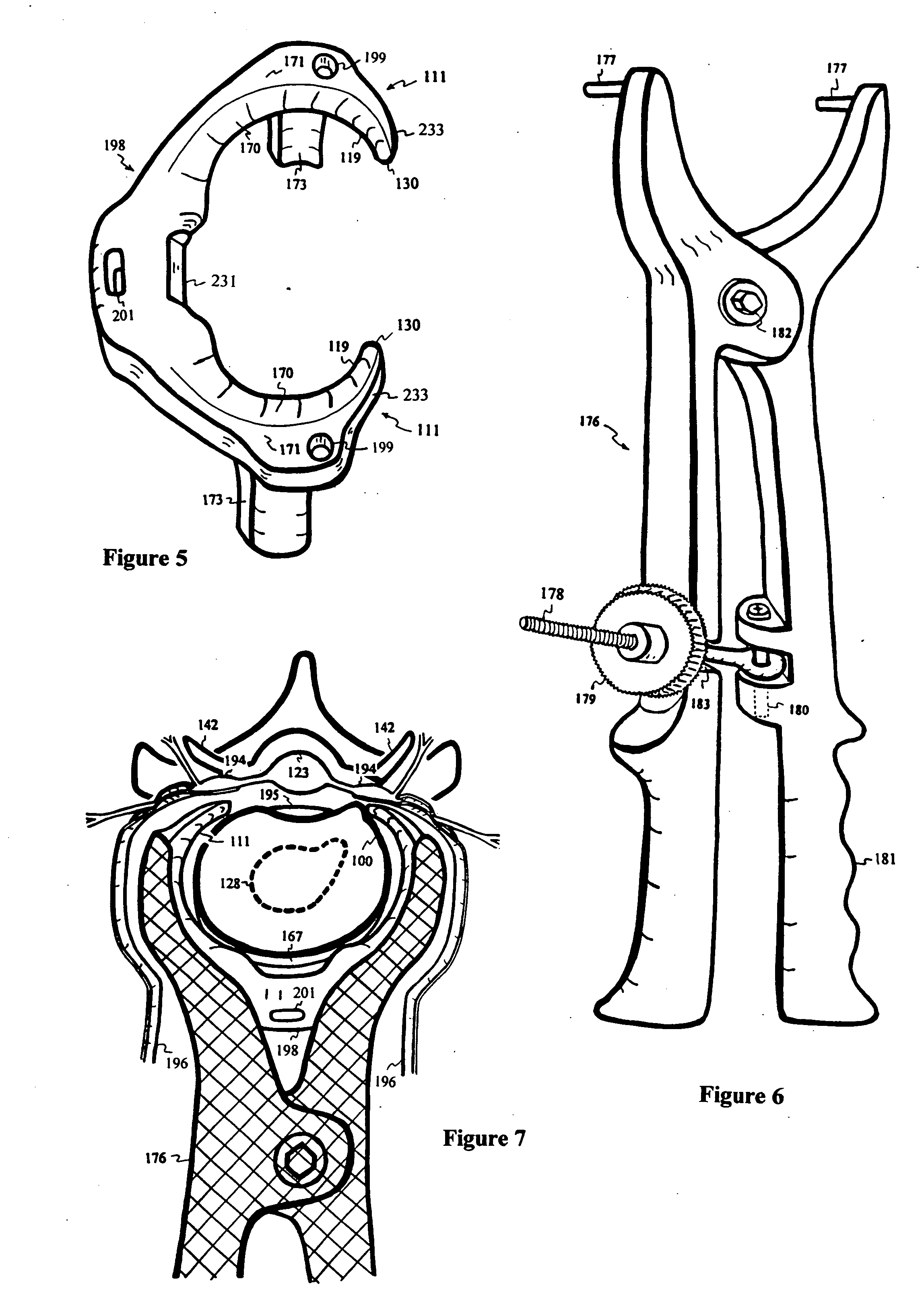Intervertebral disc repair
a technology for intervertebral discs and discs, applied in the field of intervertebral disc repair, can solve the problems of progressive degeneration of the spine, slow healing of annular tissue, and fatigue/failure of instruments, so as to minimize segmental instability, slow healing, and reduce the effect of nerve impingemen
- Summary
- Abstract
- Description
- Claims
- Application Information
AI Technical Summary
Benefits of technology
Problems solved by technology
Method used
Image
Examples
Embodiment Construction
[0124] FIG. 1 depicts a common nerve 194 impingement from a protruded disc 100 at or near the narrow channel of the neuroforamen. For protection during disc 100 repair, a nerve shield 196 contains a thin and blunt distal tip 213 for reaching into or near the neuroforamen, a trough 202 to partially surround and protect the nerve 194 and an open channel 214 for the nerve 194 to exit from the trough 202. Through anterior or lateral incision, the nerve shield 196 is introduced by sliding over the bulging annulus of the disc 100, as shown in FIG. 3, to minimize potential damage to the ventral / dorsal ramus nerve root 194. The shield 196 is then gently pressed against the partially surrounded nerve 194. Similarly, another nerve shield 196 is used contralaterally to protect both nerves 194 existing from the neuroforamen, as shown in FIG. 4.
[0125] FIG. 5 shows an elastic intervertebral disc clamp 198 with an annular contact surface 119, a sloped surface 170, a plateau surface 171 and stops 1...
PUM
 Login to View More
Login to View More Abstract
Description
Claims
Application Information
 Login to View More
Login to View More - R&D
- Intellectual Property
- Life Sciences
- Materials
- Tech Scout
- Unparalleled Data Quality
- Higher Quality Content
- 60% Fewer Hallucinations
Browse by: Latest US Patents, China's latest patents, Technical Efficacy Thesaurus, Application Domain, Technology Topic, Popular Technical Reports.
© 2025 PatSnap. All rights reserved.Legal|Privacy policy|Modern Slavery Act Transparency Statement|Sitemap|About US| Contact US: help@patsnap.com



